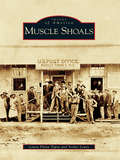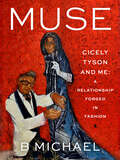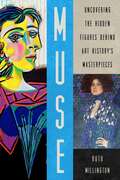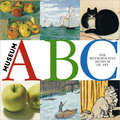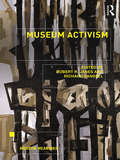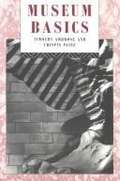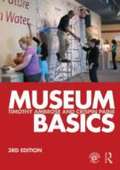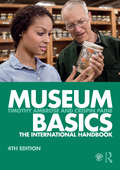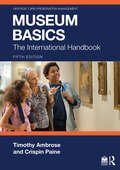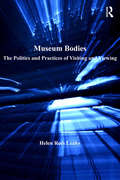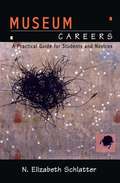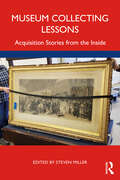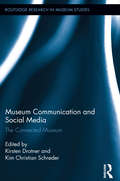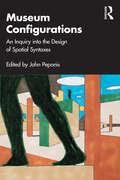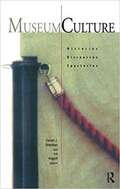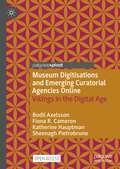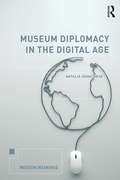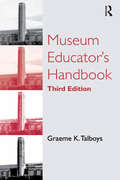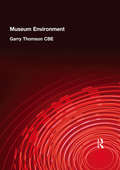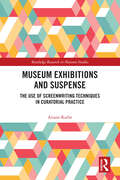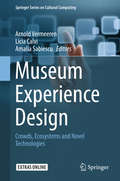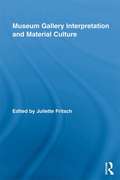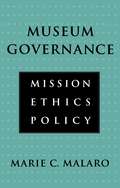- Table View
- List View
Muscle Shoals
by Laura Flynn Tapia Yoshie LewisLong known as "the Shoals," Muscle Shoals saw its formal birth as an incorporated city in 1923. It really sprang to life in 1933, when the Tennessee Valley Authority took shape on the Tennessee River and became the nation's largest public power company. The construction crew for the Wilson Dam and power plant was one of the region's first racially integrated workforces. Some truly influential figures of the 20th century came to Muscle Shoals to witness firsthand what was unfoldingin this tiny corner of the world. Thomas Edison and Henry Ford found themselves drawn to Wilson Dam and the nitrate plants in the early 1920s, as did the French existentialist Jean-Paul Sartre. At one time,Muscle Shoals was regarded as the hit recording capital of the world. FAME studio musicians referred to as the Muscle Shoals Rhythm Section gained notoriety as a result of the studio's success and are part of the legacy of the Muscle Shoals sound.
Muse: Cicely Tyson and Me: A Relationship Forged in Fashion
by B Michael“Friendship, love and a beautiful sense of togetherness sew together this gem of a book. B Michael...presents to us a portrait of a woman who was a rare gift to fashion and culture.” —EDWARD ENNINFUL, OBE, Editor-in-Chief, British Vogue & European Editorial Director, VogueA poignant and glorious photographic memoir that pays homage to the lifelong friendship between the legendary Cicely Tyson and acclaimed fashion designer B Michael, who worked with her to make her gorgeous through her last bow.What greater act of friendship is there than making someone dear look and feel their most beautiful and powerful? That was the priceless gift acclaimed designer B Michael gave to one of Hollywood’s greatest actresses, Cicely Tyson over the course of their close, decades-long relationship. In this glorious four-color visual memoir packed with stunning photographs, many never before seen, B Michael recalls the bond they shared and what it was like to dress the Queen of Hollywood for all the extraordinary events of her life.In 2005, B was summoned to create a suitable wardrobe for Ms. Tyson for a high-octane weekend hosted by Oprah Winfrey. That first successful interaction led to a nearly twenty-year-long personal and professional collaboration that defined the Hollywood star’s personal aesthetic and showcased her impeccable personality and style. B was with Ms. Tyson for the most glamorous times—the Academy Awards, the Emmy Awards, White House functions, glittering galas, high-profile funerals—as well as the tenderest days. Their circle included a who’s who of Black celebrities, including Sidney Poitier, Barack Obama, Common, Whitney Houston, Beyoncé, Lenny Kravitz, Viola Davis, Oprah, Tyler Perry, Valerie Simpson, Phylicia Rashad, and many more, most of whom are featured in personal and paparazzi photographs in these pages.Throughout their time together, B and Cicely enjoyed shocking the fashionistas, shattering inane rules limiting what a woman of a certain age should wear, devoted themselves to changing the world for the better through philanthropic efforts, laughed, cried, and inspired and celebrated each other’s excellence. In this stunning book featuring studio photos, candids from the author’s personal collection, and paparazzi shots, B shares every aspect of their time together—from the drama of a good sleeve to how to be the best friend possible to those we love.Whether you’re a fan of pop culture, couture, Hollywood, B, or Cicely Tyson, Muse is a reminder that we all have the power to be showstoppers in our own lives.Includes written contributions from Lenny Kravitz, Bridget Foley, Susan Fales Hill, and Valerie Simpson.
Muse: Uncovering the Hidden Figures Behind Art History's Masterpieces
by Ruth MillingtonThe fascinating true stories of thirty incredible muses—and their role in some of art history's most well-known masterpieces.We instantly recognize many of their faces from the world's most iconic artworks—but just who was Picasso's 'Weeping Woman'? Or the burglar in Francis Bacon's oeuvre? Why was Grace Jones covered in graffiti? Far from posing silently, muses have brought emotional support, intellectual energy, career-changing creativity, and practical help to artists. However, the perception of the muse is that of a passive, powerless model (usually young, attractive, and female) at the mercy of an influential and older male artist. Could this impression be incorrect and unfair? Is this trope a romanticized myth? Have people embraced, even sought, the status of muse? Most importantly, where would artists be without them? In Muse, Ruth Millington's goal is to re-assess and re-claim that word in a celebratory narrative that takes ownership and demonstrates how outdated the common perception of that word is. Muse also explores the idea of &‘muse&’ in a different way and includes performance artists and celebrities, iconic figures we perhaps haven&’t considered before as muses, such as Tilda Swinton and Grace Jones. By delving into the real-life relationships that models have held with the artists who immortalized them, it will expose the influential and active part they have played in contributing to the artwork they inspired, and explore the various ways people have subverted stereotypical &‘muse&’ roles. From job supervisors to homeless men in Harlem, Muse will reveal the unexpected, overlooked, and forgotten models of art history. Through the stories of thirty remarkable lives, from performing muses to muses who have been turned into messages, this book will deconstruct reductive stereotypes of the muse, and reframe it as a momentous and empowered agent of art history.
Museum
by Danny DanzigerAn ?intriguing? oral portrait of the people behind the Metropolitan Museum of Art (Entertainment Weekly) Using more than fifty interviews, award-winning writer Danny Danziger creates a fascinating mosaic of the people behind New York?s magnificent Metropolitan Museum of Art. From the aristocratic, acerbic director of the museum, Philippe de Montebello, to the curators who have a deep knowledge and passionate appreciation of their collections, from the security guards to the philanthropists who keep the museum?s financial life blood flowing, Danziger brings to life this extraordinary world through the words of those who are devoted to making the Met the American institution it surely is. .
Museum ABC (Metropolitan Museum Of Art #1)
by The Metropolitan Museum of ArtMuseum ABC is a unique and colorful picture book that introduces children to more than a hundred works of art, using the alphabet. Adults and children alike will love the visual and cultural richness of this alphabetical tour through the Metropolitan Museum's collection.
Museum Activism (Museum Meanings)
by Richard Sandell Robert R. JanesOnly a decade ago, the notion that museums, galleries and heritage organisations might engage in activist practice, with explicit intent to act upon inequalities, injustices and environmental crises, was met with scepticism and often derision. Seeking to purposefully bring about social change was viewed by many within and beyond the museum community as inappropriately political and antithetical to fundamental professional values. Today, although the idea remains controversial, the way we think about the roles and responsibilities of museums as knowledge based, social institutions is changing. Museum Activism examines the increasing significance of this activist trend in thinking and practice. At this crucial time in the evolution of museum thinking and practice, this ground-breaking volume brings together more than fifty contributors working across six continents to explore, analyse and critically reflect upon the museum’s relationship to activism. Including contributions from practitioners, artists, activists and researchers, this wide-ranging examination of new and divergent expressions of the inherent power of museums as forces for good, and as activists in civil society, aims to encourage further experimentation and enrich the debate in this nascent and uncertain field of museum practice. Museum Activism elucidates the largely untapped potential for museums as key intellectual and civic resources to address inequalities, injustice and environmental challenges. This makes the book essential reading for scholars and students of museum and heritage studies, gallery studies, arts and heritage management, and politics. It will be a source of inspiration to museum practitioners and museum leaders around the globe.
Museum Basics
by Timothy Ambrose Crispin PaineA basic guide to every aspect of museum work, from collection development and management, to marketing, maintenance and security. A textbook to be used as a basis for training courses.
Museum Basics
by Timothy Ambrose Crispin PaineMuseums throughout the world have common needs and face common challenges. Keeping up-to-date with new ideas and changing practice is challenging for small and medium-sized museums where time for reading and training is often restricted. This new edition of Museum Basics has therefore been produced for the many museums worldwide that operate with limited resources and few professional staff. The comprehensive training course provided within the book is also suitable for museum studies students who wish to gain a full understanding of work within a museum. Drawing from a wide range of practical experience, the authors provide a basic guide to all aspects of museum work, from audience development and education, through collections management and conservation, to museum organisation and forward planning. Organised on a modular basis with over 110 Units, Museum Basics can be used as a reference work to assist day-to-day museum management and as the key textbook in pre-service and in-service training programmes. It is designed to be supplemented by case studies, project work and group discussion. This third edition has been fully updated and extended to take account of the many changes that have occurred in the world of museums in the last five years.
Museum Basics: The International Handbook (Heritage: Care-Preservation-Management)
by Timothy Ambrose Crispin PaineThis fourth edition of Museum Basics has been produced for use in the many museums worldwide that operate with few professional staff and limited resources. The fourth edition has been fully updated to reflect the many changes that have taken place in museums around the world over the last six years. Drawing from a wide range of practical experience, the authors provide a basic guide to all aspects of museum work, from audience development and learning, through collections management and conservation, to museum management and forward planning. Museum Basics is organised on a modular basis, with over 100 units in eight sections. It can be used both as a reference work to assist day-to-day museum management, and as the key textbook for pre-service and in-service museum training programmes, where it can be supplemented by case studies, project work and group discussion. This edition includes over 100 diagrams to support the text, as well as a glossary, sources of information and support and a select bibliography. Museum Basics is also supported by its own companion website, which provides a wide range of additional resources for readers. Museum Basics aims to help the museum practitioner keep up to date with new thinking about the function of museums and their relationships with the communities they serve. The training materials provided within the book are also suitable for pre-service and in-service students who wish to gain a full understanding of work in a museum.
Museum Basics: The International Handbook (Heritage: Care-Preservation-Management)
by Timothy Ambrose Crispin PaineMuseum Basics provides an accessible and comprehensive introduction to professional practice in museums, galleries and related heritage organisations.This new edition includes a number of international case studies from a diverse group of guest authors who work in a variety of museums around the world. Ambrose, Paine and their contributing authors respond to recent developments in the museum field and incorporate content on new technology, as well as political and social issues, such as decolonisation, climate change and social justice. The book also covers different approaches to museology and current methods in core areas, such as collections, exhibitions, policy, education and management. Using the same modular structure as previous editions, the book includes 130 units. A number of new units have been added, including material about museums and conflict, museums and communities, loans, maintaining displays and exhibitions and sensitive objects and human remains. This edition is supported by refreshed diagrams, an updated glossary and its own Instructor and Student Resources, which provide a wide range of additional material for readers.Museum Basics will be essential reading for students engaged in the study of museums, heritage, public history, culture, archaeology, anthropology and tourism, who are learning to critically examine the ideas and ideals around museum culture. Staff and volunteers working in museums, galleries and other heritage and cultural institutions will be able to use the book to identify best practices for their daily work.
Museum Bodies: The Politics and Practices of Visiting and Viewing
by Helen Rees LeahyMuseum Bodies provides an account of how museums have staged, prescribed and accommodated a repertoire of bodily practices, from their emergence in the eighteenth century to the present day. As long as museums have existed, their visitors have been scrutinised, both formally and informally, and their behaviour calibrated as a register of cognitive receptivity and cultural competence. Yet there has been little sustained theoretical or practical attention given to the visitors' embodied encounter with the museum. In Museum Bodies Helen Rees Leahy discusses the politics and practice of visitor studies, and the differentiation and exclusion of certain bodies on the basis of, for example, age, gender, educational attainment, ethnicity and disability. At a time when museums are more than ever concerned with size, demographic mix and the diversity of their audiences, as well as with the ways in which visitors engage with and respond to institutional space and content, this wide-ranging study of visitors' embodied experience of the museum is long overdue.
Museum Careers: A Practical Guide for Students and Novice
by N. Elizabeth SchlatterThis concise volume is the place to start for anyone considering a career in museums. Expert curator Elizabeth Schlatter outlines the nature of the profession, the types of museums, and the types of jobs within museums, including salary ranges. She tells the reader the kinds of training needed, how to secure a job, and how to move up the ladder once you are working in the filed. Schlatter discusses the pros and cons, rewards and challenges of embarking on a museum career. Interviews with a host of other museum professionals show the various pathways that people take within the field. For novices in the field, students in museum studies programs, or anyone considering this as a career choice, Schlatter's book is an essential starting point.
Museum Collecting Lessons: Acquisition Stories from the Inside
by Steven MillerMuseum Collecting Lessons explains how and why museums meet their fundamental duty to collect. It is the first book of its kind to explore the diverse ways these unique institutions acquire what is preserved and used for exhibitions, programs, publications, and online applications. The 11 chapters that make up the volume are written by museum practitioners working in art, history, and science museums in the United States, Canada, and India. Together, the essays provide fascinating insights into a wide variety of significant acquisitions and museum collecting initiatives. The authors explain customary collecting methods, including donation, purchase, and field retrieval. Commonly shared acquisition denominators are also covered and include mission pertinence, quality control, the feasibility and legality of acquisition, personnel and volunteer involvement, and long-term retention assurances. The philosophies and realities presented within the case studies shine light on recent debates about who is included or excluded in museum collections – especially when it comes to race, ethnicity, gender, political perspectives, places of habitation, and economic status. Museum Collecting Lessons reflects upon past and ongoing issues relating to museum acquisition practices. Offering valuable insights about philosophical, practical, and ethical collecting practices, the book will be of interest to aspiring, beginner, and experienced museum professionals around the world.
Museum Communication and Social Media: The Connected Museum (Routledge Research in Museum Studies #6)
by Kirsten Drotner Kim Christian SchrøderVisitor engagement and learning, outreach, and inclusion are concepts that have long dominated professional museum discourses. The recent rapid uptake of various forms of social media in many parts of the world, however, calls for a reformulation of familiar opportunities and obstacles in museum debates and practices. Young people, as both early adopters of digital forms of communication and latecomers to museums, increasingly figure as a key target group for many museums. This volume presents and discusses the most advanced research on the multiple ways in which social media operates to transform museum communications in countries as diverse as Australia, Denmark, Germany, Norway, the UK, and the United States. It examines the socio-cultural contexts, organizational and education consequences, and methodological implications of these transformations.
Museum Configurations: An Inquiry Into The Design Of Spatial Syntaxes
by Peponis, Edited by JohnMuseum Configurations demonstrates how museum space functions cognitively and communicatively and questions whether it can be designed to provide a rich embodied experience, situating displays and their public in felicitous dialogue. Including contributions from authors working in the disciplines of architecture, psychology, museum studies, history and the visual arts, this volume addresses an interdisciplinary audience. The analysis of a wealth of examples shows how the voices of architects, curators and exhibition designers enter into dialogue and invite visitors to make their own connections between physical, cognitive and affective space. Considering how the layout of museums facilitates movement and orientation so that visitors may devote their attention to displays, the book questions what kinds of visual attention characterizes museum experiences and how the design of museum space can support them. In the context of an often dematerialized, atomized, and dissipating contemporary culture, the book proposes that museums can function as shared space that supports enjoyment and learning without being overly didactic. Museum Configurations focuses upon the functions and aims of the design of space. This makes the book particularly interesting to academics and students working in exhibition design and museum architecture, as well as to exhibition designers, curators, and architects.
Museum Culture: Histories, Discourses, Spectacles (Media and Society #6)
by Daniel J. Sherman Irit RogoffMuseums display much more than artifacts; Museum Culture makes us on a tour through the complex of ideas, values and symbols that pervade and shape the practice of exhibiting today. Bringing together a broad range of perspectives from history, art history, critical theory and sociology, the contributors to this new collection argue that museums have become a central institution and metaphor in contemporary society. <P><P>Discussing exhibition histories and practice in Western Europe, the former Soviet Union, Israel and the United States, the authors explore the ways in which museums assign meaning to art through various kinds of exhibitions and display strategies, examining the political implications of these strategies and the forms of knowledge they invoke and construct. The collection also discusses alternative exhibition forms, the involvement of some museums with the more spectacular practices of mass media culture, and looks at how museums construct their public.
Museum Design with, by, and for Children: Innovative International Approaches (Global Perspectives on Children in Museums)
by Clare MurrayMuseum Design with, by, and for Children makes an important contribution to contemporary museum theory and practice by focusing on the role and rights of children in museums from a new angle: design.At a time when museum practitioners are challenged to work within their particular buildings and contexts to help the children in their communities feel welcome, invited, and involved, this book presents alternative approaches that are being implemented across the world and pushing the museum field further in its commitment to children, starting with design. This book provides inspirational insights into large- and small-scale ways that children can participate in museum design and therefore exercise their human rights, gain agency, develop their sense of belonging, and form part of museum communities. Drawing on case studies from Argentina, Australia, England, Italy, Mexico, and Paraguay, and theoretical insights from the Reggio Emilia Approach, constructivism, designerly learning, laboratory-style design, and the work of Paulo Freire and Francesco Tonucci, this book explores the extent to which museums’ design processes are child-centered and how children’s material culture can be reflected in the museum design work that will ultimately shape their own early learning experiences. This book explores museum design as a process that involves key stakeholders in procedural planning and associated tasks and discussions, such as those regarding color, light, shape, form, space, and building materials.Museum Design with, by, and for Children will be valuable for museum practitioners, students, and researchers with an interest in children’s experiences in museums, particularly how children can be empowered as active participants with rights to the museum.
Museum Digitisations and Emerging Curatorial Agencies Online: Vikings in the Digital Age
by Fiona R. Cameron Bodil Axelsson Katherine Hauptman Sheenagh PietrobrunoThis open access book explores the multiple forms of curatorial agencies that develop when museum collection digitisations, narratives and new research findings circulate online. Focusing on Viking Age objects, it tracks the effects of antagonistic debates on discussion forums and the consequences of search engines, personalisation, and machine learning on American-based online platforms. Furthermore, it considers eco-systemic processes comprising computation, rare-earth minerals, electrical currents and data centres and cables as novel forms of curatorial actions. Thus, it explores curatorial agency as social constructivist, semiotic, algorithmic, and material. This book is of interest to scholars and students in the fields of museum studies, cultural heritage and media studies. It also appeals to museum practitioners concerned with curatorial innovation at the intersection of humanist interpretations and new materialist and more-than-human frameworks.
Museum Diplomacy in the Digital Age (Museum Meanings)
by Natalia GrinchevaMuseum Diplomacy in the Digital Age explores online museums as sites of contemporary cultural diplomacy. Building on scholarship that highlights how museums can constitute and regulate citizens, construct national communities, and project messages across borders, the book explores the political powers of museums in their online spaces. Demonstrating that digital media allow museums to reach far beyond their physical locations, Grincheva investigates whether online audiences are given the tools to co-curate museums and their collections to establish new pathways for international cultural relations, exchange and, potentially, diplomacy. Evaluating the online capacities of museums to exert cultural impacts, the book illuminates how online museum narratives shape audience perceptions and redefine their cultural attitudes and identities. Museum Diplomacy in the Digital Age will be of interest to academics and students teaching or taking courses on museums and heritage, communication and media, cultural studies, cultural diplomacy, international relations and digital humanities. It will also be useful to practitioners around the world who want to learn more about the effect digital museum experiences have on international audiences.
Museum Educator's Handbook (Routledge Revivals Ser.)
by Graeme K. TalboysDescribed by GEM* as 'a very informative and practical book ... worth having on any museum shelf', the Museum Educator's Handbook is a thorough and practical guide to setting up and running education services in all types of museum, even the smallest, in any geographical setting. This third edition has been comprehensively updated to reflect the increased emphasis on the role of museums at all levels of education, from schools to further and higher education. There are new sections which deal with the importance of risk management and quality assurance, as well as guidance on the prevalent use of policy documents and new marketing methods. *Group for Education in Museums
Museum Environment
by Garry Thomson CbeThe Museum Environment is in two parts; Part I: intended for conservators and museum curators and describes the principles and techniques of controlling the environment so that the potentially damaging effects of light, humidity and air pollution on museum exhibits may be minimised. Part II: the author brings together and summarises information and data, hitherto widely scattered in the literature of diverse fields, which is essential to workers in conservation research.Since the timely publication of the first two editions of this book in hardback, interest in preventive conservation has continued to grow strongly making publication of this paperback edition all the more welcome. Those whose responsibility it is to care for the valuable and beautiful objects in the world's collections have become increasingly aware that it is better to prevent their deterioration, by ensuring that they are housed and displayed in the best possible environmental conditions, than to wait until restoration and repair are necessary. The changes for the second edition have been mainly concentrated in the sections on electronic hygrometry, new fluorescent lamps, buffered cases, air conditioning systems, data logging, and control within historic buildings. A new appendix, giving a summary of museum specificiations for conservation, provides a useful, quick reference.
Museum Exhibitions and Suspense: The Use of Screenwriting Techniques in Curatorial Practice (Routledge Research in Museum Studies)
by Ariane KarbeMuseum Exhibitions and Suspense takes insights from screenwriting to revolutionise our understanding of exhibition curating. Despite all genuine efforts to reach broader audiences, museums persistently fear to risk their credibility by becoming ‘too popular’. Thus, the enormous potential to learn from other storytelling forms, more experienced in the field of entertainment, remains essentially unexploited. Museum Exhibitions and Suspense unlocks this creative potential. A comparative in-depth analysis of three classical Hollywood films and three cultural historical exhibitions demonstrates how dramatic suspense techniques can be applied to exhibitions. These techniques have to be adapted to the typical epic character of the exhibition medium. By differentiating between mild and wild suspense, the book provides a new understanding of the nature of suspense itself. Museum Exhibitions and Suspense addresses academics and students in the fields of museum studies, gallery studies, and heritage studies interested in how exhibitions function and in how to achieve dramaturgical effects like suspense. It also appeals to scholars and students within film studies who want to gain a deeper understanding of suspense. It provides an important resource for curators and other museum practitioners, and scriptwriters who intend to create stories with a wide audience appeal.
Museum Experience Design
by Arnold Vermeeren Licia Calvi Amalia SabiescuThis state-of-the-art book explores the implications of contemporary trends that are shaping the future of museum experiences. In four separate sections, it looks into how museums are developing dialogical relationships with their audiences, reaching out beyond their local communities to involve more diverse and broader audiences. It examines current practices in involving crowds, not as passive audiences but as active users, co-designers and co-creators; it looks critically and reflectively at the design implications raised by the application of novel technologies, and by museums becoming parts of connected museum systems and large institutional ecosystems. Overall, the book chapters deal with aspects such as sociality, creation and sharing as ways of enhancing dialogical engagement with museum collections. They address designing experiences – including participatory exhibits, crowd sourcing and crowd mining – that are meaningful and rewarding for all categories of audiences involved. Museum Experience Design reflects on different approaches to designing with novel technologies and discusses illustrative and diverse roles of technology, both in the design process as well as in the experiences designed through those processes. The trend of museums becoming embedded in ecosystems of organisations and people is dealt with in chapters that theoretically reflect on what it means to design for ecosystems, illustrated by design cases that exemplify practical and methodological issues in doing so. Written by an interdisciplinary group of design researchers, this book is an invaluable source of inspiration for researchers, students and professionals working in this dynamic field of designing experiences for and around museums.
Museum Gallery Interpretation and Material Culture: Museum Gallery Interpretation And Material Culture (Routledge Research in Museum Studies #2)
by Juliette FritschMuseum Gallery Interpretation and Material Culture publishes the proceedings of the first annual Sackler Centre for Arts Education conference at the Victoria and Albert Museum (V&A) in London. The conference launched the annual series by addressing the question of how gallery interpretation design and management can help museum visitors learn about art and material culture. The book features a range of papers by leading academics, museum learning professionals, graduate researchers and curators from Europe, the USA and Canada. The papers present diverse new research and practice in the field, and open up debate about the role, design and process of exhibition interpretation in museums, art galleries and historic sites. The authors represent both academics and practitioners, and are affiliated with high quality institutions of broad geographical scope. The result is a strong, consistent representation of current thinking across the theory, methodology and practice of interpretation design for learning in museums.
Museum Governance: Mission, Ethics, Policy
by Marie MalaroIn Museum Governance, Marie Malaro addresses a range of issues facing museum administrators and trustees, arguing they can handle their duties intelligently only if they understand two points--why our country sustains a nonprofit sector and what constitutes trusteeship. Armed with this knowledge, trustees can sort out knotty problems relating to corporate sponsorship, entrepreneurial activities, and fundraising in ways that preserve the integrity of the nonprofit.Malaro first explores the principles of nonprofit governance. She explains the purpose and use of professional codes of ethics and offers practical advice about board education and its role in fostering the long-term health of an organization. She then applies these principles to situations frequently confronting trustees, discussing how to set collection strategies, balance mission and entreprenurial ventures, handle deaccessioning, maintain effective board oversight, approach automation, and deal with repatriation requests.
